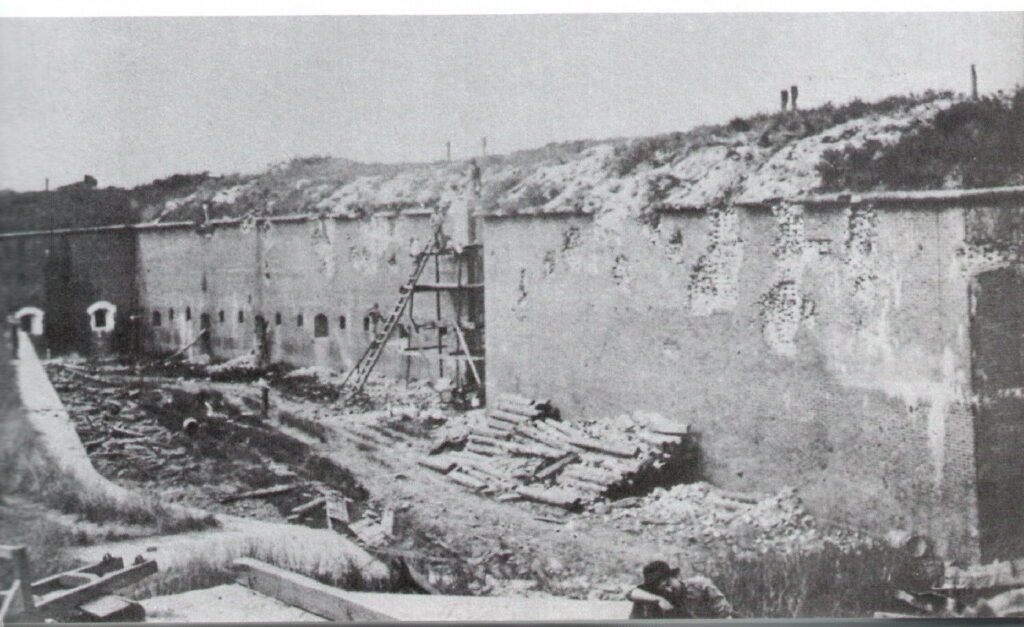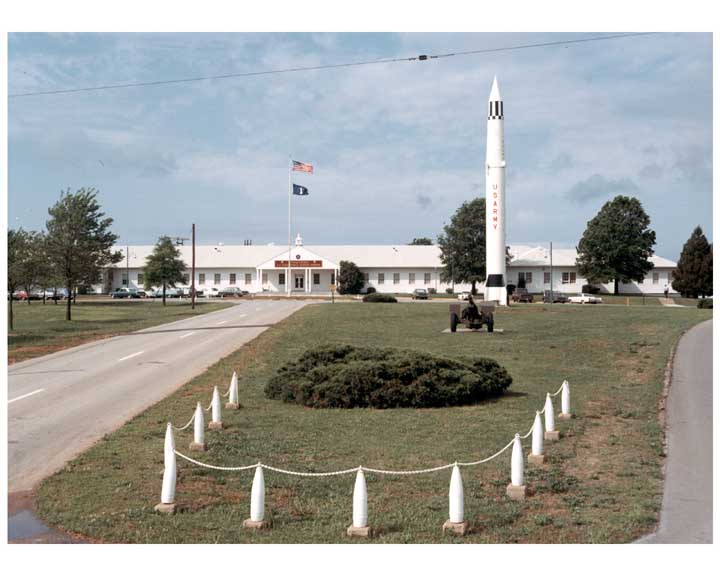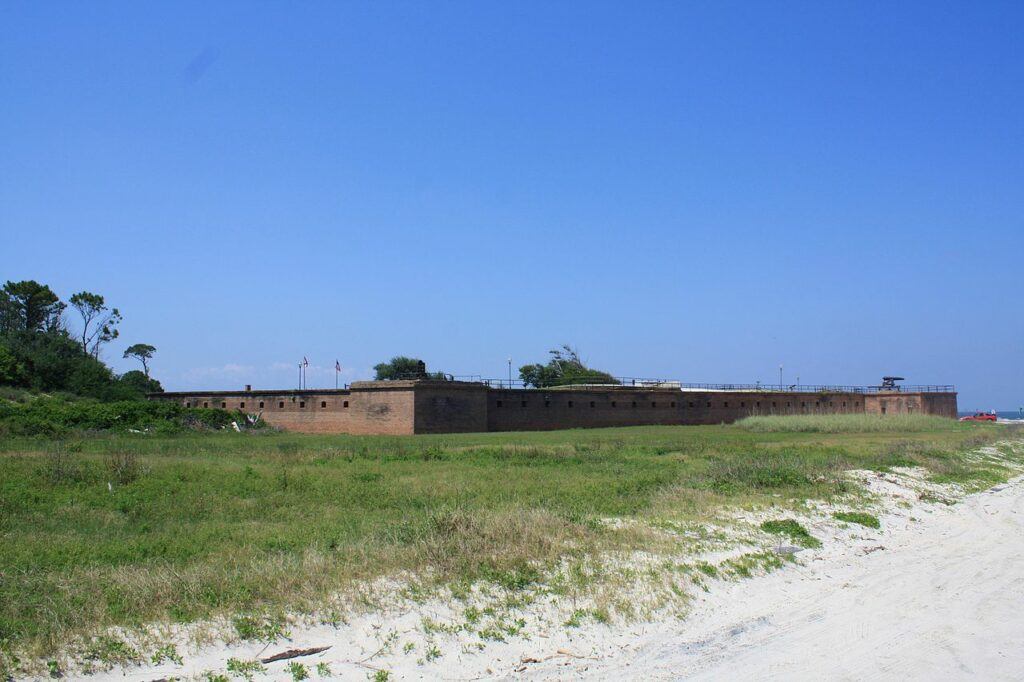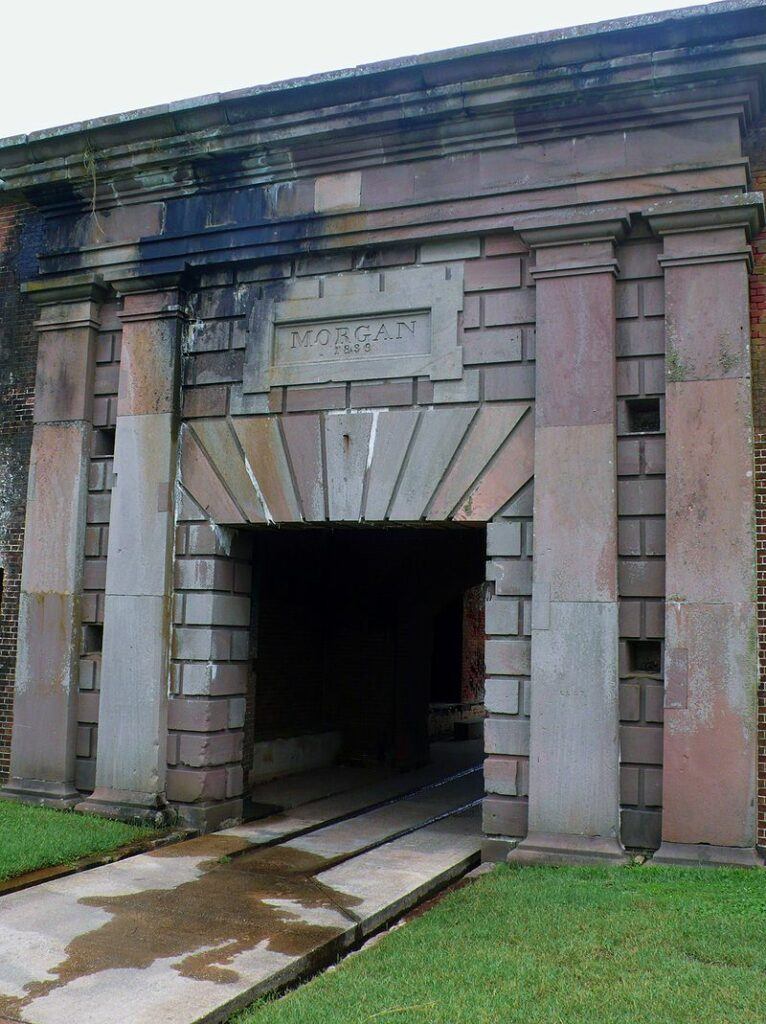Alabama is home to several vital United States military bases crucial to the nation’s defense and military operations. These bases contribute to the nation’s security and provide various benefits and resources to the local communities in Alabama.
Some notable Army bases in Alabama include Fort Rucker, Redstone Arsenal, and Anniston Army Depot. Each installation serves a unique purpose and offers military personnel various facilities and training programs.
Fort Rucker, located in Dale, Alabama, is the state’s predominant Army installation, while Redstone Arsenal and Anniston Army Depot are known for their vital roles in military operations and support.
As we delve further into the subject, we will explore the history, functions, and significance of these Army forts in Alabama. Understanding their role within the broader framework of the United States military system will provide valuable insights into the strategic importance of these installations.
Historical Background of Army Forts in Alabama

Army forts in Alabama have played significant roles throughout American history, including the War of 1812, the Civil War, and conflicts with Native American tribes.
The U.S. Army strategically built these forts to protect and defend critical locations, such as Mobile Bay and important archaeological sites in the state.
For instance, Fort Montgomery was built in 1813 and named after General Richard Montgomery, who had died during the Revolutionary War. Fort Montgomery was designed to protect the new American settlement of Mobile from potential British attacks.
Similarly, Fort Morgan has served as the guardian of Mobile Bay since 1834, and it played a vital role in the Battle of Mobile Bay during the Civil War.
Some forts in Alabama, like Forts Morgan and Gaines, were constructed as part of the Third System of Fortifications, which began in 1817.
The federal government initiated this system in response to lessons from the War of 1812, focusing on building harbor defenses with strategic defensive missions in mind.
Another notable Army post is Fort Mims, which is unique in Alabama’s history due to the Battle of Burnt Corn in 1813. American militia intercepted Red Stick Creeks, who received British military supplies.
Later that year, the Red Sticks successfully assaulted Fort Mims, capturing the fort and killing most service members.
List of Army Forts in Alabama
Steeped in military history, Alabama has various active and historical army posts. These military installations were crucial to the state’s defense during different periods.
Currently, there are two significant active army forts in the state:
Fort Rucker is the primary military installation for Army Aviation training and serves as the primary location for graduating fixed-wing aviators of the United States Army.
Redstone Arsenal: Located near Huntsville, Redstone Arsenal is home to the United States Army Materiel Command, Aviation and Missile Command, and multiple other vital organizations.
In addition to the active forts, there are several historical forts in Alabama: Here are the names of these installations.
- Battery Duportail: Located at Fort Morgan, this historical fort played a significant role in defending the Alabama coastline.
- Easely’s Fort: Situated near the junction of Alabama and Tombigbee rivers, this fort has a rich historical background.
- Elk River Fort: During its operation, this fort guarded the Elk River and the surrounding area.
- Fort McClellan: A former army fort near Anniston, Fort McClellan once served as a training and support center for the U.S. Army.
- Fort Hawkins: is a historic fort with archaeological and cultural significance, providing insights into Alabama’s military past.
Each of these forts exhibits a different aspect of Alabama’s military heritage and significance, spanning various historical eras and military engagements. This rich history helps current, and future generations of servicemen and women appreciate and recognize the brave defenders of Alabama’s past.
Notable Army Forts in Alabama
Fort Morgan

Fort Morgan is a historic military site on Mobile Point in Baldwin County, Alabama. The fort was named after Revolutionary War hero Daniel Morgan and opened in 1843. It exemplifies the utilitarianism and functionality of military architecture during the 19th century.
Since its construction, Fort Morgan has been occupied in six separate conflicts, including the Civil War, the Spanish-American War, and both World Wars.
The fort was Alabama’s most significant permanent military post between 1900 and 1923. The 479-acre site contains concrete artillery batteries constructed between 1895 and 1904 and historic military buildings dating from 1899 to 1910.
The military occupied Fort Morgan for over two years during World War II, but by then, the concrete batteries were no longer the primary defensive positions. The army returned the fort to the state after the war, ending an era of coastal defense.
Fort Morgan Today
Today, Fort Morgan is a State Historic Site and a National Historic Landmark. The Alabama Historical Commission (AHC) has owned and operated the site since 1977, and it is an educational tourist destination.
Visitors can explore the fort’s history and architecture through guided tours, exhibits, and demonstrations. The fort also offers a stunning view of Mobile Bay, making it a popular spot for photography and sightseeing.
Fort Gaines

Fort Gaines is a historic military site on Dauphin Island in Mobile County, Alabama. The fort was constructed in 1821 and named after General Edmund Pendleton Gaines, a hero of the War of 1812.
The military built the fort to protect the entrance to Mobile Bay and played a crucial role in the Battle of Mobile Bay during the Civil War.
Confederate soldiers occupied the fort during the Civil War and were heavily bombarded by Union forces during the Battle of Mobile Bay in August 1864.
The fort was eventually surrendered to Union forces and remained under their control for the remainder of the war. After the war, the fort was used as a military prison and a quarantine station for yellow fever.
Today, Fort Gaines is a State Historic Site and a National Historic Landmark.
The Alabama Historical Commission (AHC) has owned and operated the fort since 1981, and it is a popular tourist destination. Visitors can explore the fort’s history and architecture through self-guided tours and exhibits.
Fort Gaines also offers a stunning view of the Gulf of Mexico, making it a popular spot for photography and sightseeing.
In addition to the fort itself, visitors can also explore the surrounding natural areas, including beaches and nature trails.
Fort Rucker

Fort Rucker is a United States Army installation in Dale County, Alabama. It was established in 1942 and named after Colonel Edmund Rucker, a Confederate Civil War officer. The fort’s primary mission is to provide training and support for Army Aviation.
Alabama’s Fort Rucker covers approximately 63,000 acres of southeast Alabama countryside in an area known as the Wiregrass.
The installation is home to the United States Army Aviation Center of Excellence and the United States Army Aviation Museum.
The US Army Aviation School moved to Alabama in August 1954, and the first class began at Rucker in October of that year. The military gave the post permanent status in October 1955 with the name change from Camp Rucker to Fort Rucker.
Today, Fort Rucker is one of the largest employers in the region, with over 20,000 military personnel from the armed forces, civilians, and contractors working on the installation. The fort is also a significant contributor to the local economy, with an estimated annual economic impact of over $2 billion.
In addition to its primary mission of Army Aviation training and support, the fort provides various services and support for military personnel and their families, including healthcare, education, and recreational activities.
Redstone Arsenal

Redstone Arsenal is a United States Army post in Madison County, Alabama. The camp was established in 1941 as a chemical weapons site and has since evolved into a garrison for various tenants across the Department of Defense, Department of Justice, and NASA.
The Arsenal has played a significant role in developing rocket engines and other technology, particularly during the race to the Moon in the late 1950s and 1960s, led by German rocket scientist Wernher von Braun.
Today, Redstone Arsenal is home to several major organizations, including the United States Army Aviation and Missile Command (AMCOM), the Missile Defense Agency (MDA), and NASA’s Marshall Space Flight Center.
The post covers approximately 38,000 acres and employs over 40,000 military personnel, civilians, and contractors. The Arsenal’s primary mission is to provide research, development, testing, and evaluation of missile systems and other advanced technologies.
In addition to its primary mission, Redstone Arsenal provides services and support for military personnel and their families, including healthcare, education, and recreational activities.
The Arsenal is also a significant contributor to the local economy, with an estimated annual economic impact of over $10 billion. Redstone Arsenal is a critical component of the United States national defense infrastructure and continues to play a vital role in developing advanced military and space technologies.
Architectural Features of Army Forts in Alabama

Forts in Alabama, such as Fort Morgan and Fort Gaines, exhibit unique and impressive architectural features that reflect the military strategies of their time.
Fort Morgan, a masonry pentagonal bastion fort, is often considered one of the region’s finest examples of military architecture. Its design was aimed at providing optimal protection and strategic advantage.
The fort’s profile and layout include a series of bastions, which are angular structures projecting outward from the main walls.
Fortresses were explicitly designed to enable crossfire against any potential enemy breaching the perimeter.
Additionally, Fort Morgan features an outer ditch that renders the fort more challenging to approach for potential attackers, further enhancing its defensive capabilities.
Another noteworthy architectural feature of these Alabama forts is their use of brickwork and masonry. Fort Morgan, for example, was constructed using over 23 million locally sourced bricks.
The thick, sturdy walls protected the fort from direct bombardment while allowing it to maintain a low profile, making it less visible to potential enemies observing from a distance.
Fort Gaines also exhibits impressive architectural and engineering techniques.
Fort Gaines was designed specifically for coastal defense, featuring multiple gun emplacements strategically positioned to cover vast areas of the surrounding coastline.
The fort’s design also includes corner bastions, providing indirect fields of fire to protect its vulnerable areas.
Fort Morgan and Fort Gaines were also designed with living quarters, ammunition storage, and other essential facilities for troops stationed there.
The careful planning and strategic placement of these amenities further showcase the thoughtful and practical architectural design of these historic Alabama forts.
Role in Major Conflicts
During the Civil War, Alabama played an important role in Confederate naval operations. Forts Morgan and Gaines, located on opposite sides of the Mobile Channel, were instrumental in defending the city of Mobile and its harbor.
The Battle of Mobile Bay in August 1864 was the state’s most significant military operation. Union forces aimed to capture the Confederate port.
Fort Gaines and Fort Morgan engaged in the battle, with Fort Morgan continuing to resist Union forces for several days after the fleet successfully entered the bay.
Ultimately, both forts were captured, but their roles in the Civil War showcased the significance of Alabama’s coastal defenses during World War II. Army forts in Alabama provided training and support for soldiers in preparation for combat.
Though the United States Military didn’t fight any specific battles on Alabama soil, the state’s fortifications were crucial in preparing troops for the global conflict.
In particular, Fort Rucker became the primary training center for multiple infantry divisions, including the 47th Infantry Division, which was responsible for preparing replacement troops during the Korean War and Vietnam War Army forts in Alabama have continued to evolve and adapt to the needs of the United States military in the modern era.
Fort Rucker, for example, has become the primary helicopter training center for the U.S. Army, providing essential aviation support and expertise for current military operations.
Other defense department installations, such as the Anniston Army Depot, have shifted their focus toward logistics, supply chain management, and vehicle maintenance.
These modern roles for Alabama’s army forts demonstrate their ongoing importance to the overall readiness and capability of the U.S. military.
Preservation and Tourism of Army Forts in Alabama

Army forts in Alabama are important historical sites that attract numerous tourists, history enthusiasts, and students. Two of the most renowned forts in the state are Fort Morgan and Fort Gaines, which played crucial roles in the Battle of Mobile Bay during the American Civil War.
Fort Morgan is now preserved as a historical site, showcasing its intricate military designs and crucial role in the Gulf Coast’s military history. This fort is considered one of southern Alabama’s four most impressive historic forts.
Similarly, Fort Gaines Historic Site is another prime example of 19th-century American coastal fortifications, attracting tourists and educators. However, the site’s preservation has proven more challenging due to coastal erosion.
Furthermore, Fort McClellan, originally Camp McClellan, is a decommissioned United States Army post in Anniston. Though it is no longer an active military base, it can still be visited to learn about its historical significance.
Visitors to these historical forts can participate in guided tours, explore nearby nature trails, and take advantage of recreational activities available in the surrounding areas. Preservation efforts remain crucial for maintaining these sites so that future generations can appreciate Alabama’s military history.
Other Important Military Bases in Alabama
Other than Army forts, Alabama has a couple of different military bases, including Maxwell Air Force Base. This Air Force Base is in the same area where the Wrights Flying School once sat in Montgomery, Alabama.
This base houses active-duty soldiers that are trained and ready for combat. Maxwell is one of the most important Air Force Bases in the United States, in line with West Point Academy.
Conclusion – Army Forts in Alabama
Alabama has several key Army installations, including Fort Rucker, Redstone Arsenal, Fort McClellan, and Anniston Army Depot. Throughout history, these forts and structures served crucial roles in military training, administration, and research.
Today, places like Fort Rucker serve as aviation training centers, while Redstone Arsenal is widely regarded for its cutting-edge technology and research facilities. On the other hand, Fort McClellan is a decommissioned Army post that still holds historical significance.
Alabama’s Army bases, active and decommissioned, have played significant roles in the growth and development of the state. Their influence can be felt in various aspects of life, from the local economy to the communities that have been shaped around them. And these forts have been home to countless American heroes, active duty soldiers, and Alabama National Guard for hundreds of years.

Cory is a website owner and content creator who enjoys fishing, history, coin collecting, and sports, among other hobbies. He is a husband and father of four.
Romans 15:4 For whatever was written in former days was written for our instruction, that through endurance and through the encouragement of the Scriptures we might have hope.

